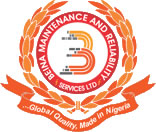Exercise in Futility is when business organizations keep setting and stretching their goals without a proper consideration and analysis of the current capabilities of their workforce. A Business with no future is that business that does not periodically assess its performance and seek improvement opportunities. You do not have to wait till the end of the process to determine the outcome or results. Periodic performance assessment with leading key performance indicators can be pointers to the eventual end result. Businesses must be treated as living organisms. You feed them, they grow. You starve them, they die. Human Capital Capability Development is no doubt a very nutritious meal for every business organization.
Managers should only demand from associates or direct reports a level of performance they know, associates have capacity to deliver. Demanding otherwise is criminal and unjust. That is why it is a necessity for every business organization to periodically assess its workforce capabilities and seek ways to close out all competency gaps discovered. Every living business should and must have an active capability framework. Most business organizations do have this, but mostly Inactive. Learning and development professionals must seek to develop themselves, equipping themselves with exceptional knowledge and best practices in the world of human capital capability development.
We do not just train for the purpose of training. We should train because there is need for it. Learning should be tailor made for specific target individuals and not just generic. If we must train, then we should train correctly. Many times learning and development professionals waste resources meant for capability development because we do not take the time and effort to perform a learning needs analysis or training needs analysis as others will call it.
1. First we need to be able to define the Performance Gap available or Business Goals driving the need for capability development.
2. We need to carry out a Training or Learning Needs Analysis. This exercise will clearly define the required skills and aptitude required for specific job roles, the current available skill level and the skill gap between them.
3. We then draw out an Individual Development Plan, stating the required training necessary to up skill the job holders and the proposed target completion period. This is however, high level plans.
4. This stage is very critical, as this is where the learning and development professional designs the suitable kind of training necessary to close the skill gaps identified. To do this, the L&D professional must understand the learning patterns of the target job holder. Owning to the fact that various individuals have specific training patterns that works best for them.
5. We then develop an Individual Training Plan, this document will contain details on how training will be delivered. It should contain details like; Training type, training contents, training cost, training frequency, training dates, assessment type etc.
6. At this stage we deploy trainings based on schedule. The L&D professional evaluates the trainees and trainer simultaneously, ensuring that the individual training plan is adhered to and the desired knowledge transfer is achieved.
7. Performance is the only proof of capability development. Therefore there is need for L&D professionals to support the transfer of learning in their various organizations. Learning is incomplete until employees are able to apply newly acquired skills to their jobs. Until the very stimulant or business need is met. As a learning professional, you must support your trainees or learners to apply their learning and new skills by creating an avenue for them to apply this skills on their job. Training justifications should be tangible. It should show in business performance and not just on papers.
Learning and Development should form part of every business organization’s continuous improvement effort. Obsolescence is a function of a halt in improvement. Therefore, a workforce that does not seek continual capability development will eventually become obsolete and unproductive. As we seek to improve our products and services, sales strategies etc, we must also seek to improve our human capital capabilities.





